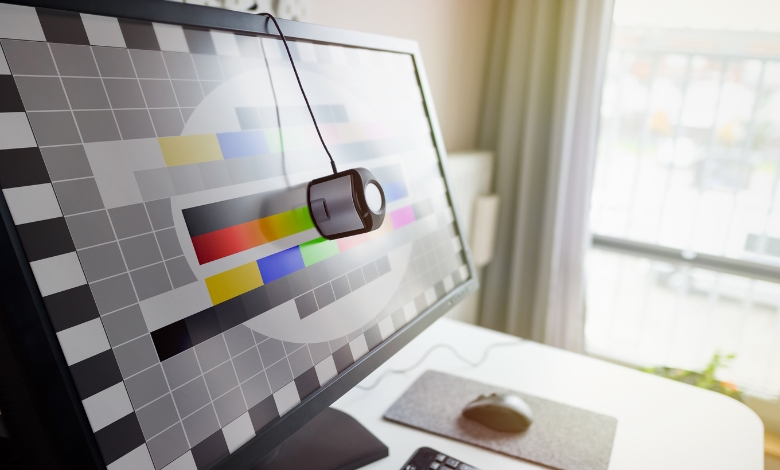Is a Delta E of 2.56 good? Learn what Delta E means, why it matters for color accuracy, and how it impacts your prints and projects.
Years ago, when I first came across Delta E, I had no idea what it was. A graphic and photography hobbyist at the time, I can remember looking at the term in a product specification sheet and thinking, Why should this be important at all? It wasn’t until after I had printed out a batch of photos for a client and noticed that the colors came out completely wrong that I realized just how much color accuracy is important. Measuring productivity in creative fields often involves paying attention to details like color accuracy, as even small errors can lead to big issues. If you’re here and wondering if a Delta E of 2.56 is “good,” don’t worry, we’re going to break it down for you in easy, simple terms.
Article Breakdown
What is Delta E, and Why Does It Matter?
Delta E (ΔE) is another term for “the difference between two colors.” It is a numerical measure for how far apart in color two are. The lower the figure, the closer they are. Sounds simple enough, but things really start to get interesting when you start thinking about how it applies in real life.
Think about it this way: You’re painting a room and choose a wonderful blue for the walls. It dries and isn’t exactly as it had appeared in the store. That difference, in what you are seeing and had envisioned, in essence is exactly what Delta E is measuring. Now consider the same thing in your computer screen, printer, or TV screen. If the color is wrong, it can ruin everything, especially in jobs where things need to be exact.
Breaking Down the Delta E Scale
In order to truly know if a Delta E of 2.56 is “good,” let’s have a better look at the scale. A simplified breakdown is as follows:
| Delta E Range | Description | Applications |
| 0-1 | Colors are virtually identical | Ideal for high-end professional tasks |
| 1-2 | Barely perceptible differences | Acceptable for most professionals |
| 2-3 | Noticeable differences | Fine for general use; not ideal for precision |
| 3+ | Significant deviations | Unacceptable for professional work |
Now let us put this in context. A Delta E of 0 is equal to two identical colors, you could not tell them apart no matter how hard you tried. A Delta E greater than 3 is like looking at two completely different colors, and at this level things begin to fall apart for commercial application.
With a Delta E of 2.56, you’re in middle ground territory. It is detectible, but is it okay or not is going to be depending on what you’re doing.
Is a Delta E of 2.56 Good? Let’s Get Specific
In my first calibration, my Delta E came out at about 2.5. My thinking at the time was, That should be good enough, right? Then, though, I printed out some photos for some weddings, and the color wasn’t quite right compared to how they’d appeared on screen. My heart sank. A discrepancy as small as this can be a real problem for a commercial photographer. What I had to do next is what I’m about to discuss.
For Professionals
For graphic designers, photo editors, and video editors, a Delta E of 2.56 is perhaps not sufficient. Accuracy is paramount in these lines of work, and even minor color variations can affect output. For example:
- Graphic Designers: Imagine this – creating a logo for a client who requests a certain brand color, but when it is printed, it does not print as expected.
- Photographers: More than a Delta E of 2 when producing prints can make skin tones or other information in photos appear unnatural.
- Video Editors: The precise color grading is vital, particularly for high-budget productions.
In such instances, a Delta E below 2 is typically advisable. Above that, and there is a risk of discernible discrepancies.
For general use
Now suppose you’re not a pro. Perhaps you’re just someone who likes editing photos or watching films on a good quality monitor. A Delta E of 2.56 may be completely acceptable. The majority of people are not going to be able to discern a difference unless they’re specifically searching for it.
An actual analogy is watching a video on two different TV receivers and noticing that there is a difference in color. That is a real use for Delta E. In real usage, variations like this are normally no issue.
Context is Everything
Most importantly is, is 2.56 “good enough” or not, truly just based on why you’re using it. If it is for personal use and don’t need precise accuracy, sure, it should be alright. However, if it is for commercial use and each and every detail matters, you’re going to need a lower Delta.
Why Does Perception of Delta E Vary?
One thing that I have realized after years is that color perception is not universal. What is right for me can be wrong for another and is so because there are variables involved in how we perceive different variations in color.
1. Human Sensitivity
Different sensitivities for variations in color are possessed by different people. My client, for example, could perceive even the smallest variation in color. My design looked flawless in my eyes, but they could discern a difference in the shade of green utilized. It just happened that they had superior eyes for detail compared to mine.
2. Lighting conditions
Ever noticed why a color is different in outdoor sunlight than in man-made lighting indoors? That is because lighting can have a profound impact on how we perceive color. A Delta E of 2.56 can be okay in one source but be noticeable in another.
3. Contextual Colors
Even the actual colors being compared can have some impact. Pale red shades, for example, are more salient than equally pale blue shades. That is, a Delta E of 2.56 can be more noticeable in some colors than in some others.
How to Improve or Get Better Delta E
If you are like me, we are sure you would like to know how to obtain as good as possible color accuracy. The following are some tips that have worked for me in the past:
1. Tilt Your Monitor
An easy method for achieving a high Delta E is to have your monitor calibrated. A spectrophotometer or colorimeter can be utilized in ensuring that your screen is properly representing color. I have a colorimeter myself, and it is truly a game-changer for photography.
2. Choose the Right Equipment
They are not equal. If color fidelity is at or near the top of your wish list, look for monitors with a Delta E rating at or below 2. Eizo and BenQ are good brands for professionals.
3. Mastering Color Profiles
Using the right color profile (like sRGB or Adobe RGB) can be a game-changer. The profiles are used to achieve consistency in color across hardware, and if you are sending out to print, it is especially critical.
The Applications of Delta E
In making better sense of how Delta E works in different spheres, let us explore some everyday examples:
- Graphic Designing: Think about making a poster in vibrant colors. If your Delta E is too high for your screen, the printed copy may be different than on your screen.
- Photography: Once, I shot a wedding and spent countless hours editing photos. The prints came out slightly off in color when I had them printed out, and I knew my monitor wasn’t as accurate as thought. That is when I purchased a better monitor.
- For everyday use: If movies and Internet surfing are about all you’re doing, a Delta E of 2.56 is good enough. The vast majority are not going to be able to perceive a difference.
Key Takeaways
- Delta E is a color difference measure and is in a mid-level at 2.56.
- For graphic, photography, and video editing specialists, a lower Delta E is ideal for precise output.
- We can perceive color variations depending on human perception, lighting conditions, and context for color.
- In order to better improve or obtain better Delta E, consider calibration of your monitor, utilization of appropriate equipment and color profiles. In practical application, Delta E is utilized in ensuring accurate colors in varied media.
Additional Resources
- What is Delta E? And Why Is It Important for Color Accuracy: Explains Delta E as a measurement of color accuracy and its significance in ensuring precise color reproduction.
- What is Delta E and How Does it Affect My Creative Work: A detailed guide on Delta E, its role in color accuracy, and how it impacts creative professionals.
- Understanding Delta E: The Ultimate Guide to Color: Breaks down the concept of Delta E and its importance in achieving accurate color perception.
- Monitor Calibration for most CG/VFX artists: Covers the essentials of monitor calibration, including tools and techniques for CG and VFX professionals.



